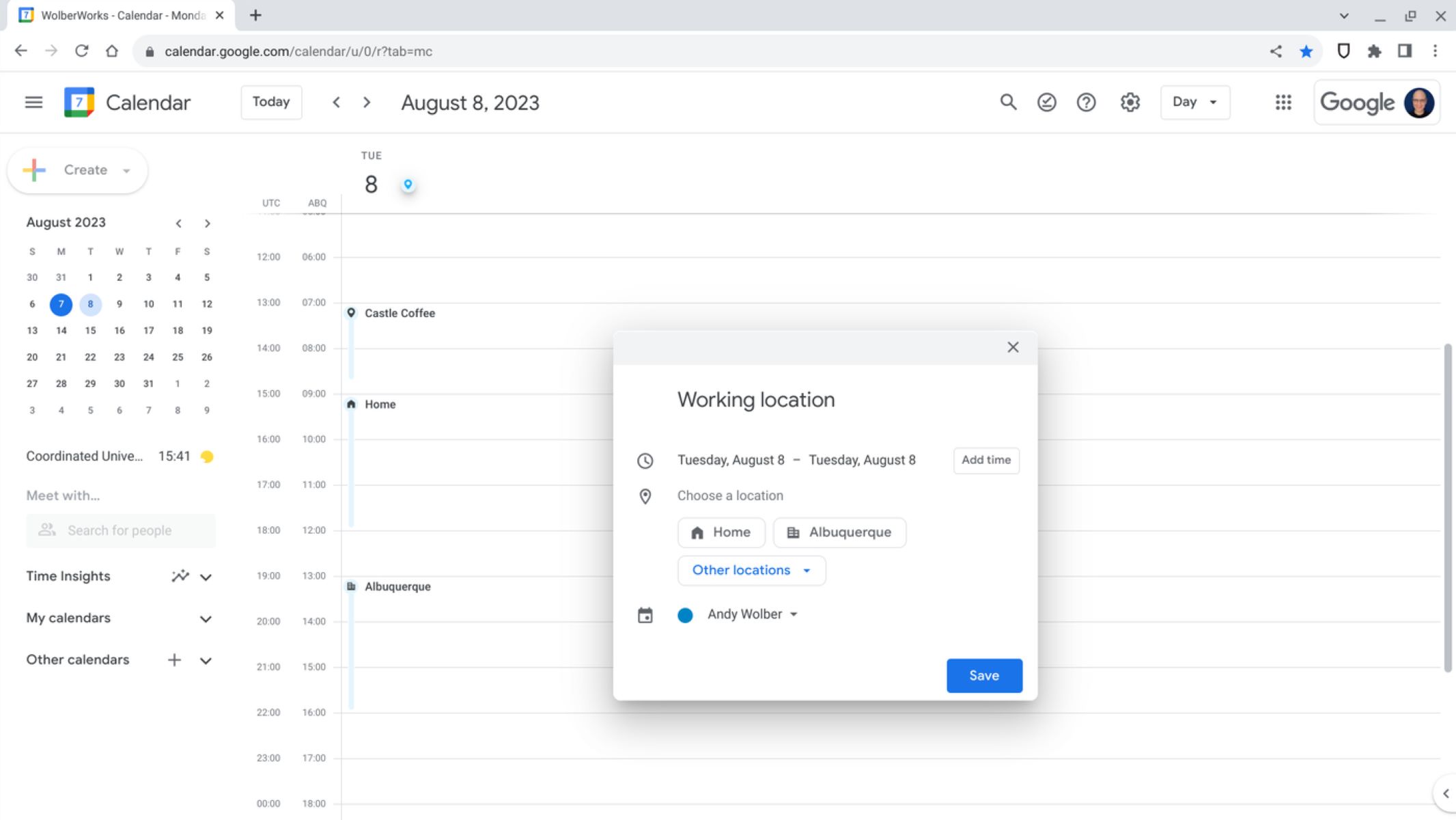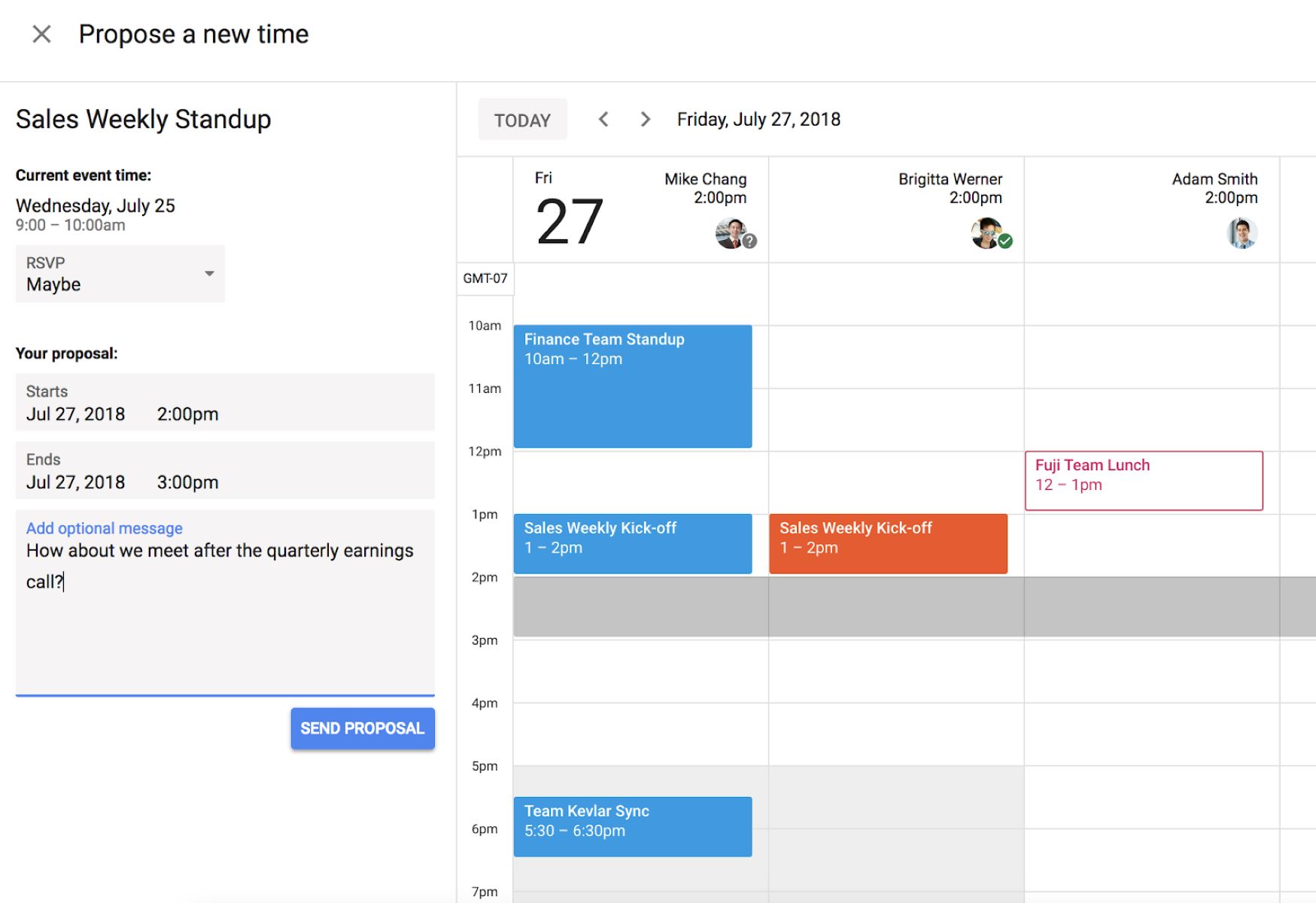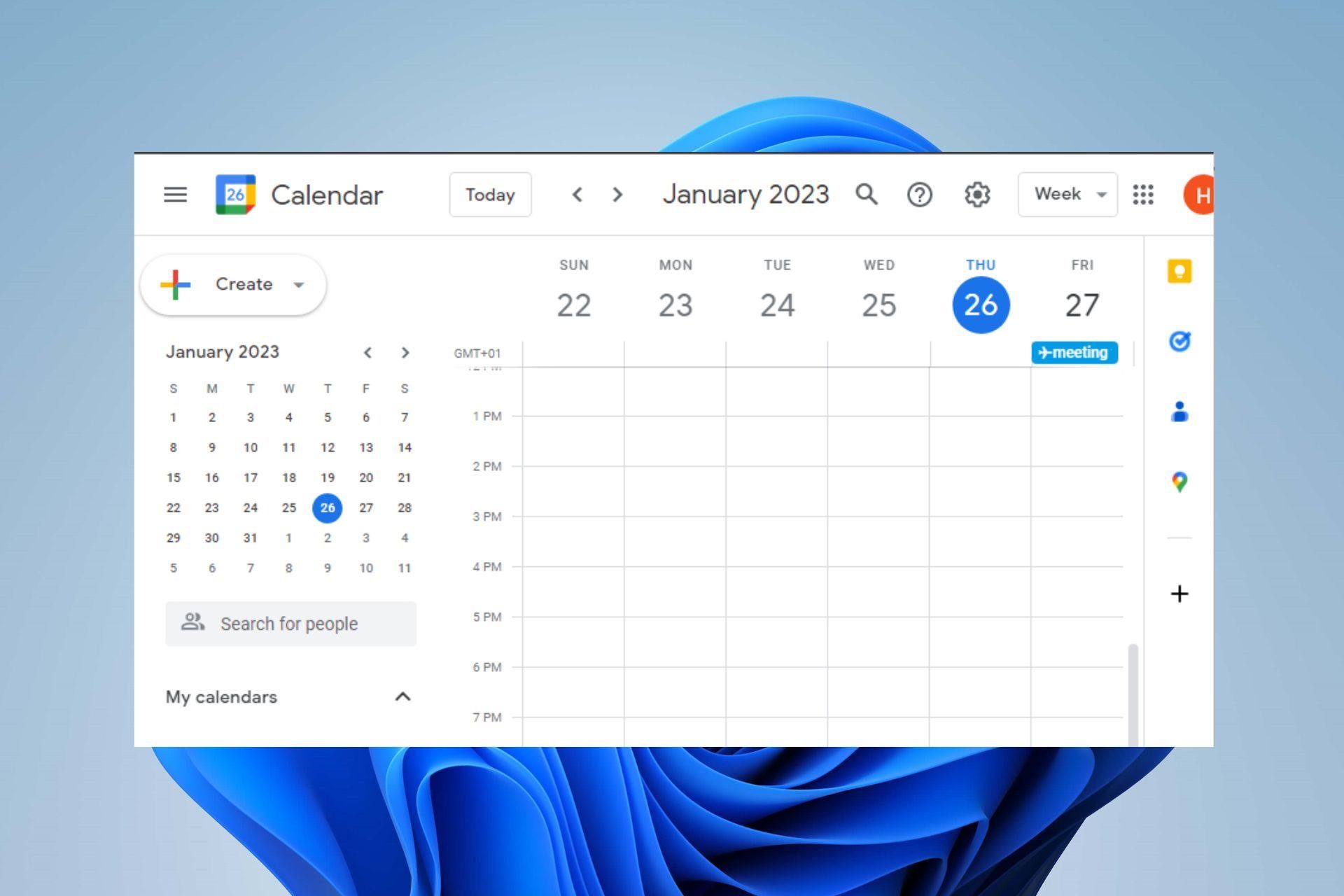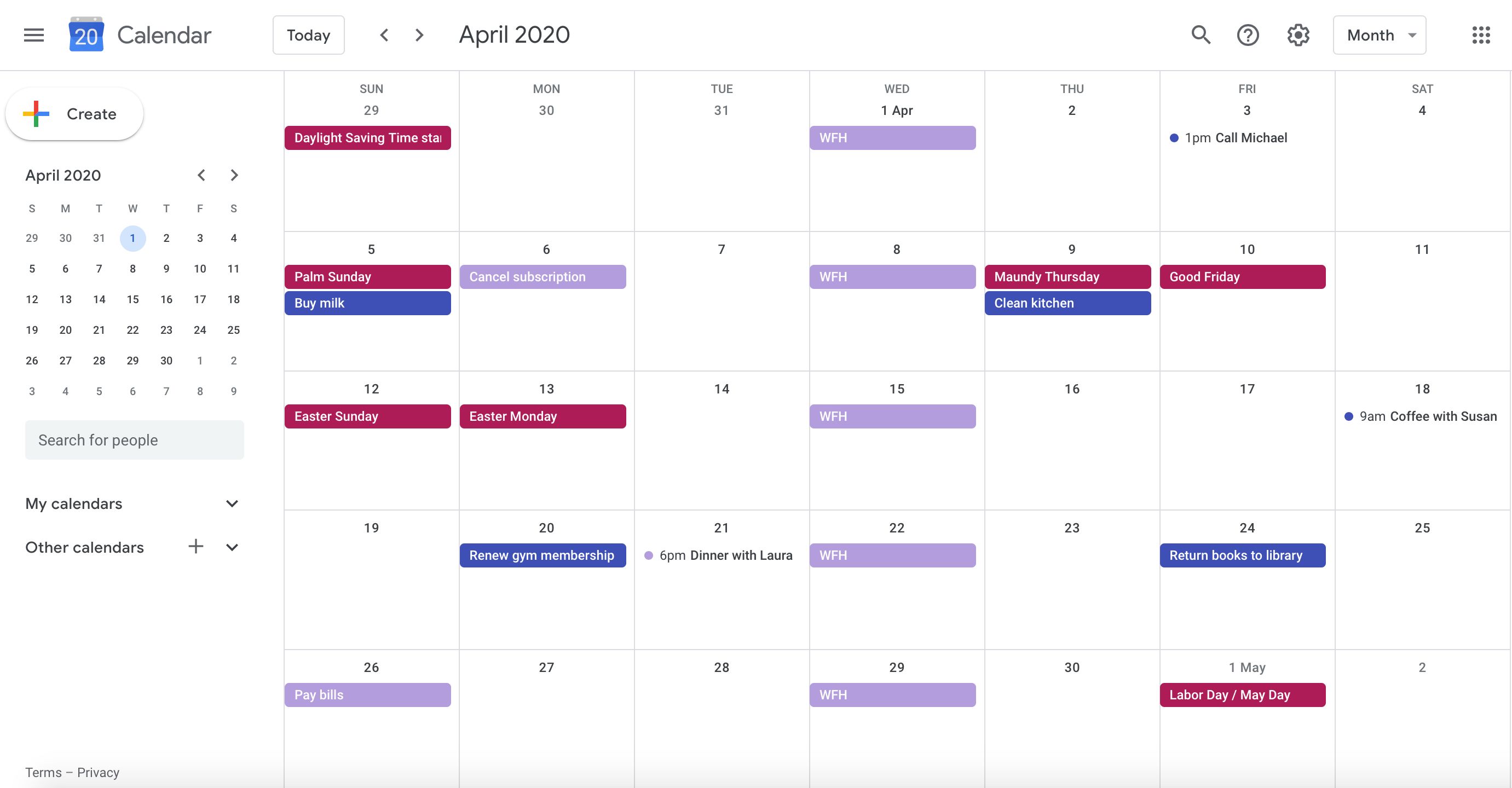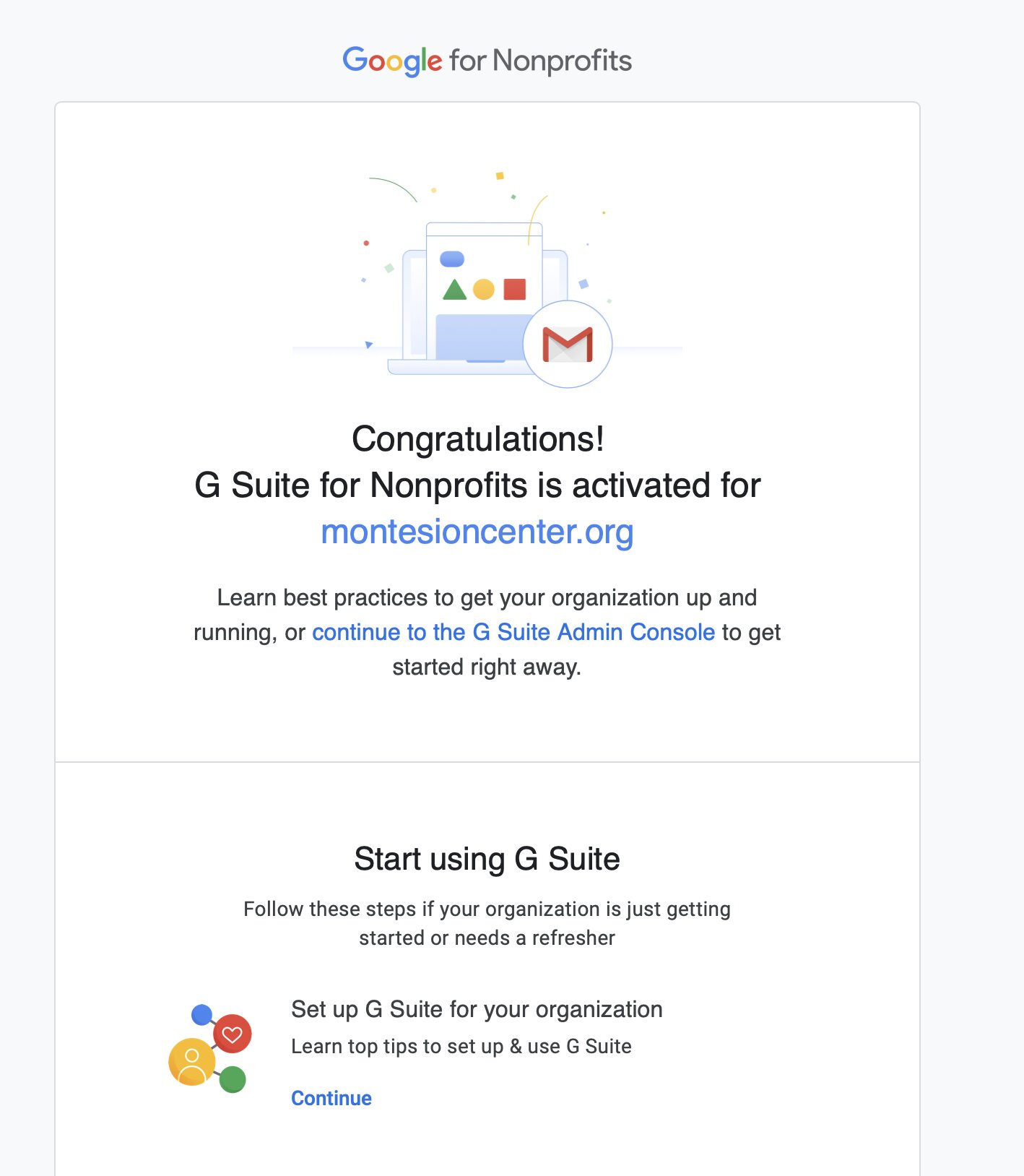Scheduling online meetings, even with the help of Google Docs, can be stressful, which is why it pays to know how to set a new meeting time in Google Calendar. This new feature allows a person who receives an invitation to a meeting to suggest another meeting time, pending the review and approval of the meeting organizer. Let’s look at how to propose a new time in Google Calendar and how you can work on it.
What Is Google Calendar?


Google Calendar is a highly popular and free online calendar. Similar to a typical calendar, you can use it to mark important meetings and events, including tasks across time. Using it, you can schedule appointments, send reminders, and create calendars for different time zones.
You can control the visibility of the events you add to your calendar. That is to say, you can easily change the visibility of your schedules and events to make them visible only to you (personal) or to a select group of people (public). You can even add notes to your events to clarify details and assign point persons for particular tasks.
Google Calendar is an excellent tool for managing your daily schedule and keeping track of important deadlines. The software sports a user-friendly interface that is pretty intuitive to use and uploads the data input into a cloud-based system. This makes it accessible across multiple devices using the same log-in information. Like Google Drive Gmail, the service is integral to the accessible version of Google Workspace. All that is required to use it is for the user to create a Google account.
For additional information on what to expect from Google Calendar, consider this review of the cloud-based scheduler.
Google Calendar: A Few Advantages


Setting up meetings and events on Google Calendar is straightforward, thanks to its simple, click-and-drag interface. The interface displays the calendar according to timelines, covering daily, weekly, monthly, and four-day increments. You can easily block out anywhere from an hour of a day to multiple days within a month and fill in the details of the meeting/event.
One of the unique selling points of Google Calendar is the fact that it is a web-based service. With most other calendar programs, you must purchase them online and store them locally on your hard drive. In other cases, you need to save your calendar data onto a centrally-managed database through a local area network (LAN). Google Calendar, on the other hand, is web-based. Being web-based means that all your inputs and schedules are uploaded online and accessible across devices with the same log-in information. The software also offers SMS support, sending text-based reminders about meetings and events.
How to Propose a New Time in Google Calendar
Aside from its essential calendar functions, Google Calendar is also helpful for team-based collaboration. It makes sending invites to other people regarding meeting schedules and events very easy. All it takes is for one individual to create an event in their calendar, fill in the details, and then add other people’s email addresses to include them in the invite.
Typically, anyone who receives an invite to a scheduled meeting or conference through Google Calendar can respond with a few options (yes, no, and maybe). However, Google recently added an update called the “propose new meeting time” button below the choices we’ve mentioned.
This update will allow you to propose an alternative date and time for meetings that may be problematic. It will also enable said invitee to cross-check the availability of other members if and when permissions have been granted. That is, users can compare the available schedules of other users to come up with a recommendation.
However, we need to note that the proposed schedule is only that- a proposal. It is subject to review, acceptance, or rejection of the meeting coordinator, hopefully with consensus from other team members. The organizer of the event/meeting may also propose an alternative time to the one proposed, hopefully with agreement from other team members.
Of course, there is another side to the “propose a new meeting time” feature on Google Calendar. Because in addition to someone proposing a schedule change, you also need someone to review, accept, or ignore the proposed schedule. That being said, allow us to highlight the steps for managing your team meeting schedules from both perspectives.
How to Set a New Time in Google Calendar
- Click on the Google Calendar icon next to your Google account profile picture from the top-right corner of the page.
- Alternatively, you can click “View” on Google Calendar through the email notification.
- Look for the automated response buttons at the bottom of the page next to the “Going? Yes, No, and Maybe options. Select the “Up” arrow key.
- Look for the “Propose a New Time” option underneath the basic response buttons.
- Essential in your suggested time, as well as an explanation for the proposed change in schedule in the box provided.
- Once you’re sure about your proposal, hit “Send Proposal.”
How to Review, Accept, or Ignore a Newly Proposed Time in Google Calendar
- Click on the Google Calendar icon next to your Google account profile picture from the top-right corner of the page.
- Alternatively, you can click “View” on Google Calendar through the email notification.
- Look for and click the “Review proposed time” option.
- Select the “Save” option to accept the proposal, or ignore the notification if you wish to receive the original schedule.
- If you choose to reject the proposal, it might be best to send the person who sent the proposal an email explaining your stance.
- Key in optional updates through the pop-up notification and hit “Send.”
Final Thoughts on How to Propose a New Time in Google Calendar


We hope that this guide has helped teach you how to set a new meeting time in Google Calendar. Google designed the software to be easy to use and manage across devices. The app became even more collaborative and intuitive with the addition of the “propose a new meeting time” feature. That being said, it’s worth keeping your requests for a change of schedule limited to times when you absolutely cannot join the meeting or event.
It would help if you also kept in mind that other people are involved in the meeting or event. With that in mind, you can’t simply request to change the schedule just because you feel like it. You need to have a compelling reason to request a schedule change. You should preferably only do so if required or have an essential role in the meeting. Otherwise, you can always inform the team regarding your schedule conflict and simply attend the subsequent sessions.
Naturally, keeping a calendar is only one way to keep your daily life organized and easy to manage. If you are a working individual or a student, you also want to keep track of your daily productivity or progress in achieving your personal goals. In that case, you may want to try out a few browser extensions to help you manage your time and your progress as an individual.
To stay on top of your daily tasks and life itself, consider this list of the best Google Chrome extensions to help you stay organized.









